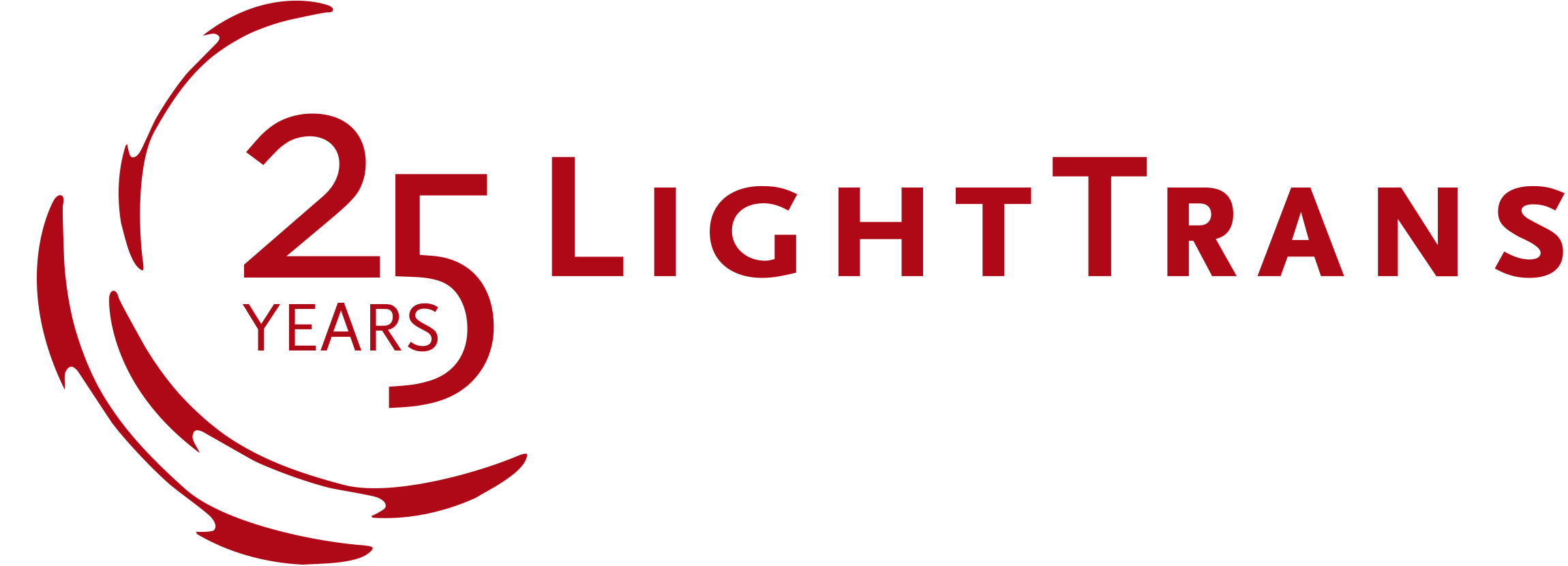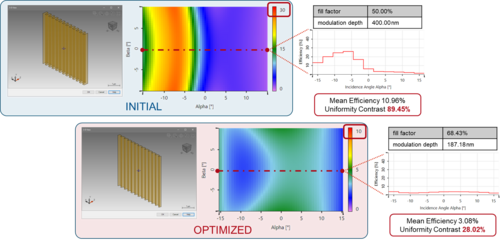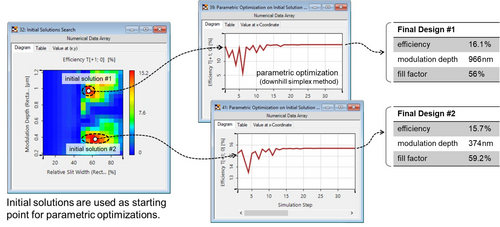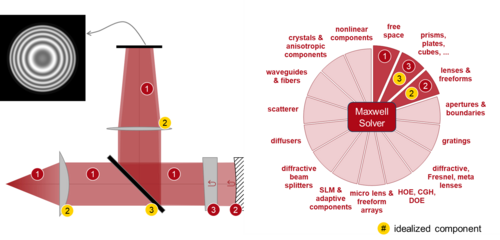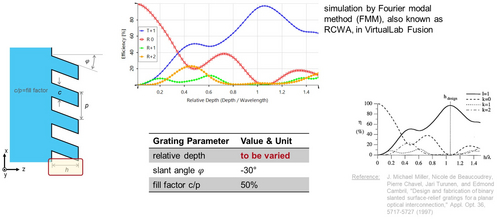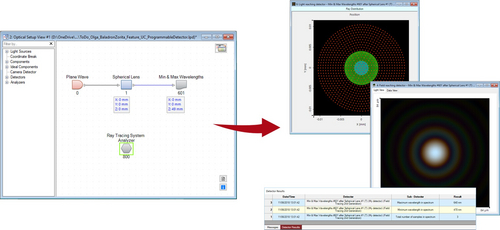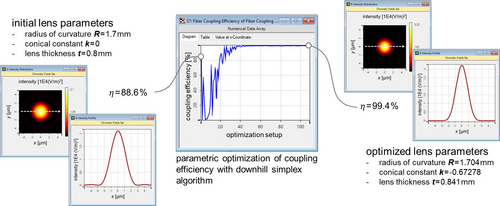What’s new in our Optical Modeling and Design Software?
Grating Optimization over Desired FOV
Diffractive gratings are often used to couple light into lightguides, and that forms the basis of the near-eye display devices for AR/MR applications. For vision purposes, the diffraction efficiency of the coupling grating must be optimized over a certain field of view (FOV). That is a challenging task. Using the rigorous Fourier modal method (FMM, also known as RCWA) in VirtualLab Fusion, and the evolutionary algorithm from optiSLang, an optimized grating structure that delivers good uniformity over the desired FOV can be obtained.
Read moreOptimization of Coupling Gratings
Gratings are often used for coupling light out of or into lightguides. How to optimize the coupling efficiency is always an important issue in such cases. The coupling gratings usually have feature sizes comparable with the wavelength and therefore require a rigorous modeling technique. VirtualLab Fusion provides convenient tools for the configuration of the grating structures, the rigorous Fourier modal method (FMM) for grating analysis, and also the parametric optimization method. With the combination of these technologies, a practical workflow for coupling grating optimization is presented.
Read moreReal digital – How LightTrans masters challenges of AR
A few weeks ago LightTrans had the pleasure of being interviewed by SCHOTT. The technology magazine focused this time on the theme "Real digital"; LightTrans seems therefore a very fitting interviewee choice – not only because of our software, but also because of a long-lasting collaboration and the physical proximity between the two companies.
Read moreLightTrans Events besides SPIE Photonics West
SPIE Photonics West 2019 is just around the corner. Besides the SPIE exhibition you can attend our FREE seminars on February 7th and 8th. Both seminars are organized by LightTrans and you can therefore register for them using the registration form on our website. Take the chance and save your seat now!
Read moreAnalysis of Lightguide Coupling
Lightguide structures play a role in various applications nowadays, from integrated optics to modern display technology. Coupling light out of or into the lightguide is therefore an issue of concern for all lightguide-based applications. Such tasks are usually realized with diffractive gratings, since they can be integrated with the lightguide using modern fabrication techniques. In VirtualLab Fusion, the coupling efficiency can be rigorously calculated with the Fourier modal method (FMM). As an example, we analyzed several selected slanted gratings, and the simulation results show good agreement with those from literature.
Read moreProgramming C# Modules
The customization potential of the optical modeling and design software VirtualLab Fusion is nowhere more evident than in the modules. While most other programmable items in the software present the logical constraint of pre-defined inputs and outputs, the modules (be they coded in C# or Visual Basic) offer the user total freedom of implementation. Below, we present an in-depth tutorial describing the basic workflow for how to program and use your own modules, with a simple example given in detail as illustration. We include a second, more advanced example in a more condensed format.
Read moreProgramming Custom Detectors
In some of our previous newsletters we already spoke of the potential for customization via programming, which is characteristic of the optical modeling and design software VirtualLab Fusion. In the current newsletter we present another programmable element: detectors. Full accessibility to the vectorial electromagnetic field, paired with the customizability, further increases versatility, facilitating the implementation of any detector function. Find below two documents that illustrate how to work with the Programmable Detector in VirtualLab Fusion: a detailed tutorial and an additional example in a more condensed format.
Read moreFiber-Coupling Lens Design and Tolerance Analysis
In many fiber-optics systems, a customized design of the coupling lens is often required so as to achieve a good fit with the given input field and working distance. VirtualLab Fusion provides not only the tools for the analysis of fiber-coupling efficiency, with the in-built Parametric Optimization function, but also enables an efficient design of the coupling lenses. In fiber optics, it is also known that coupling efficiency may be sensitive to e.g. misalignment of the components in the system. With the Parameter Run in VirtualLab Fusion, one can conveniently perform a tolerance analysis of such fiber-coupling systems and investigate the influence of different parameters.
Read more